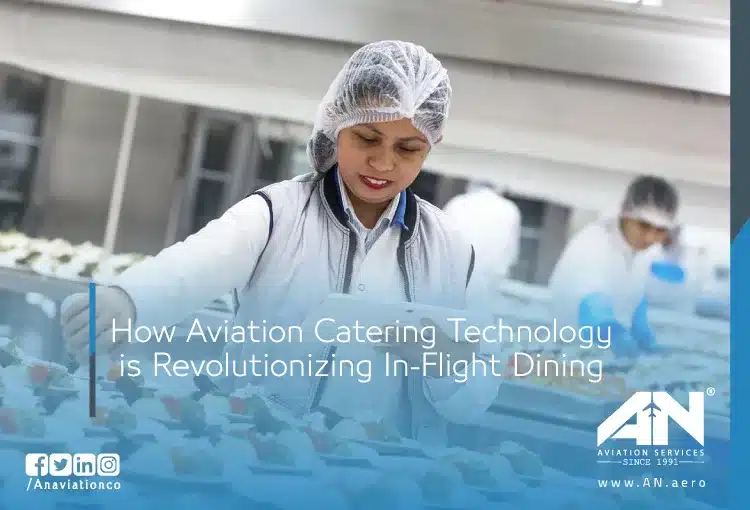
The in-flight dining experience is undergoing a high-tech makeover, thanks to innovations in aviation catering technology. Gone are the days of limited meal options and inefficient processes. Today, catering services for airlines have embraced cutting-edge tools and methods to optimize every aspect of meal planning, preparation, and delivery. These advancements aren’t just about improving taste and variety—they’re about enhancing operational efficiency, reducing waste, and meeting the evolving expectations of modern travelers.
Let’s dive into how aviation catering technology is setting a new standard for the airline catering industry and transforming passenger experiences.
The Role of Aviation Catering Technology in Modern Supply Chains
At the heart of aviation catering lies a sophisticated supply chain. Airlines catering to millions of passengers daily need precise coordination and seamless logistics. Aviation catering technology has introduced real-time monitoring and data analytics to streamline operations.
For instance, using real-time data, catering companies can track everything from food production to delivery schedules. This helps airlines avoid last-minute shortages while ensuring meals are fresh and meet passengers’ dietary preferences. By integrating supply chain management with advanced technology, airlines can ensure that food waste is minimized and operational costs are optimized.
Furthermore, predictive analytics powered by artificial intelligence helps catering services anticipate trends, such as specific meal preferences on certain routes. This level of customization not only enhances the passenger experience but also aligns with sustainability goals by reducing overproduction.
Reducing Waste and Promoting Sustainability
One of the biggest challenges in the airline catering industry has been addressing food waste. Traditional methods often resulted in excess production, leading to significant environmental and economic impacts. However, aviation catering technology has provided solutions to these inefficiencies.
Through data analytics and AI-driven platforms, catering companies can now monitor and forecast meal demand more accurately. This means they can produce just the right amount of food to meet passenger needs without creating unnecessary waste. Additionally, leftover meals or surplus food can be redirected to food banks or recycling initiatives, further supporting sustainability efforts.
Catering services have also started integrating sustainable packaging solutions to reduce the environmental impact of single-use plastics. With passenger expectations shifting toward eco-conscious practices, these changes position airlines as leaders in environmental responsibility.
Enhancing Passenger Satisfaction Through Technology
The modern traveler expects a seamless and personalized experience—even when it comes to in-flight dining. Aviation catering technology plays a crucial role in meeting these expectations by offering customizable options and real-time feedback systems.
For example, airlines can now offer passengers the ability to pre-select their meals during booking or provide digital menus onboard that reflect the available meal options in real time. These features not only improve convenience but also give passengers a greater sense of control over their dining experience.
In addition, catering companies use advanced cooking techniques and equipment to ensure meals taste as fresh as possible, even at 30,000 feet. Combined with real-time data on passenger feedback, airlines can continually refine their offerings to maintain high levels of satisfaction.
Catering Companies Embracing Innovation
Behind the scenes, catering companies are leading the charge in revolutionizing aviation dining. From utilizing automation to introducing smart kitchens, these companies are finding new ways to improve efficiency and quality.
For example:
- AI-powered kitchen operations: Automating repetitive tasks like chopping, portioning, and packaging ensures consistency and saves time.
- IoT-enabled equipment: Connected devices in catering facilities allow real-time tracking of meal production and storage conditions.
These innovations enable catering companies to meet passengers’ evolving demands while ensuring high standards of food quality and hygiene.
The Future of Flight Catering in the Aviation Industry
As technology continues to evolve, the airline catering industry will see even more innovations that improve efficiency and elevate passenger experiences. Key trends to watch include:
- Smart waste management systems: Further reducing the environmental impact of catering operations.
- AI-driven personalization: Offering passengers tailored dining options based on their preferences and travel history.
- Sustainability goals: Increasing the use of sustainable aviation fuels (SAF) and eco-friendly practices in supply chain operations.
These advancements highlight the commitment of the aviation industry to stay ahead of the curve while maintaining a strong focus on environmental and social responsibility.
Conclusion: Transforming the In-Flight Dining Experience
Aviation catering technology has become a game-changer for the airline industry. By embracing innovative solutions, airlines are not only enhancing passenger satisfaction but also addressing key challenges like food waste and operational inefficiencies. The integration of real-time data, automation tools, and AI-driven analytics ensures that the future of in-flight dining is more sustainable, efficient, and personalized than ever before.
As passengers, we can look forward to enjoying meals that are not only delicious but also a reflection of the industry’s commitment to innovation and sustainability. So, the next time you’re served a meal at cruising altitude, remember the sophisticated technology and planning that made it possible.

